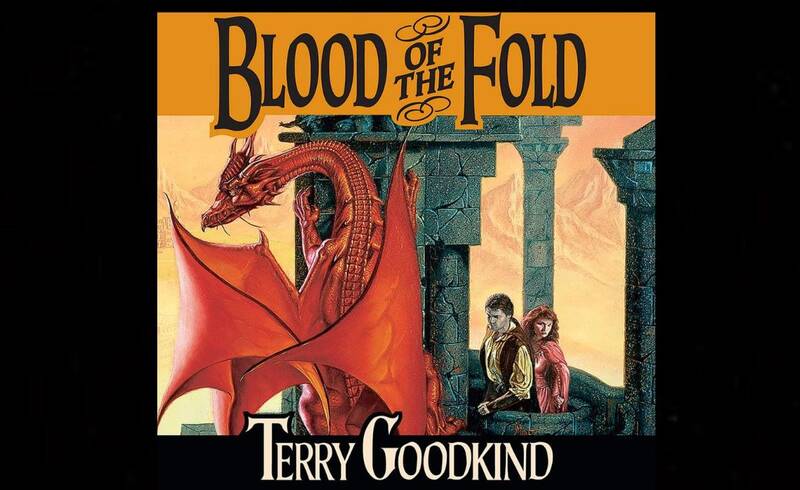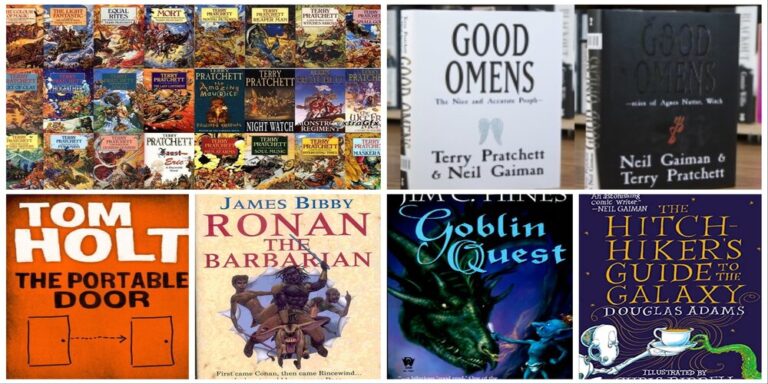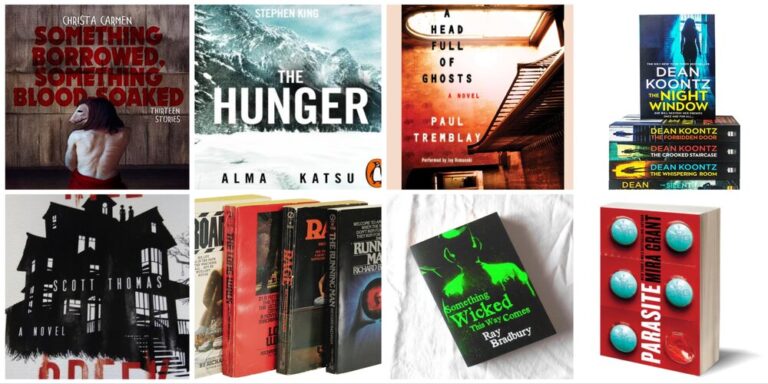| Genre | High fantasy, grimdark fantasy |
| Author | Terry Goodkind |
| Language | English |
| Number of Pages | 623 |
| Release Date | October 15th 1996 |
Blood of the Fold is the third installment of the Sword of Truth series. The book is shorter than the previous one but in terms of general book length, it’s still pretty long, having over 600 pages in total. My first impression when I read this was that this book was overall decent. To be honest, I expect a bit more after Stone of Tears but overall, I can’t say the book was bad. Blood of the Fold can be considered a transition part in large series which Sword of Truth definitely is. As usual, I will do a full breakdown of the novel without any major spoilers so feel free to continue reading.
Blood of the Fold is a bridge book in the Sword of Truth series
Before we get into story analysis, let’s just see how this book fits into the entire series. The first two books, Wizard’s First Rule and Stone of Tears were a part of Darken Rahl storyline. The next four books, the first one being Blood of the Fold, follow a new storyline, one that mainly focuses on Imperial Order. In my previous review of Stone of Tears, I said that the ending felt rushed – I assume this is why Terry Goodkind decided to tie up some loose ends in Blood of the Fold and to lay the groundwork for the Imperial Order saga that follows. Blood of the Fold wraps up the events from Wizard’s First Rule and Stone of Tears and sets up the stage for the Temple of the Winds. As you can guess, this kind of book isn’t the best one in the series but I do feel that it was necessary to have a bridge book like this one.
Blood of the Fold brief summary
The plot begins exactly where we left off in Stone of Tears as Richard travels back to Aydendril with Verna and Waren. The journey is long and once he finally gets there, he starts establishing his rule as the new Lord Rahl. Four Mord-Sith (Raina, Cara, Berdine, and Hally) protect him as he tries to unite the Midlands under his rule. However, new danger arise for the people of the Midlands – from the west, the Blood of the Fold, an army of zealots led by Tobias Brogan seeks to vanish all that oppose the Creator. This army is led by pure religious fury and stops at nothing in dealing with people who they deem to be Banelings, the agents of the Keeper.
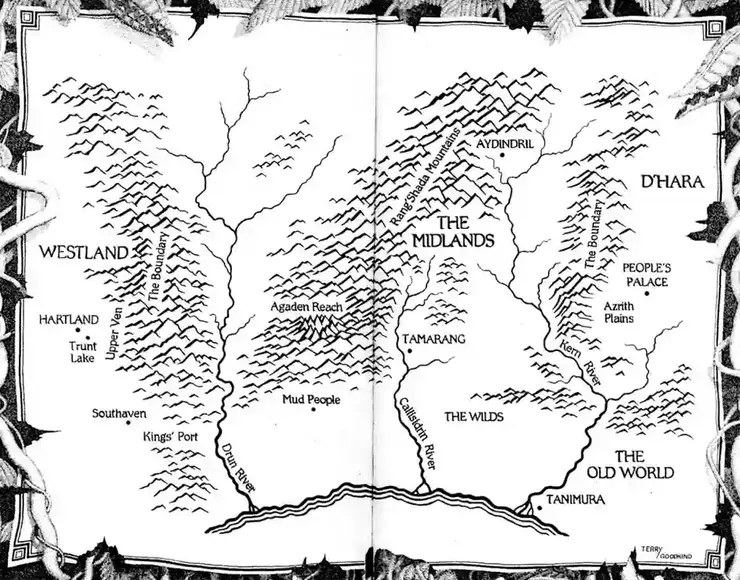
From the Old World, a new villain called emperor Jagang emerges, a dream-walker of immense power. He now presses on with his army towards the New World since Richard has destroyed the barrier that separated the two worlds. Mriswiths, invisible assassin-like monsters are under the enemy’s command so our protagonists have to fight them as well. Meanwhile, Sisters of the Dark are back in action again, now serving Emperor Jagang as he used his abilities as a dream-walker to control them. Subplots include Ann and Nathan as well as Zed and Kahlan. The main storyline mostly focuses on Richard and his establishment of D’Haran rule in the Midlands.
The plot and pacing analysis
As I mentioned before, this is a bridge book so just by looking at the brief summary you can see how many things are ending and beginning at the same time. The plot is strong overall but I would argue that the pacing could have been handled better. I get that it’s difficult to wrap things up from the past novel and set up a stage for the next one while trying to tell a compelling story at the same time, but still, Blood of the Fold plot was the weakest one from the first three books of Sword of Truth series. Don’t get me wrong, the story is there – you just have to carefully read in order to understand all the events which are happening. I also think that maybe editing was a problem since sometimes a part of one storyline is done in depth while you can see that the other storylines are just briefly written while the plot is pushed forward nonetheless. The magic system still feels inconsistent and plot-driven but weirdly interesting and fun at the same time.
Character development focuses on Richard Rahl mostly
Blood of the Fold focuses on Richard and new characters in the Sword of Truth series: Cara, Emperor Jagan, Tobias Brogan, and Sisters of the Light. Kahlan, Zed, Ann, and Nathan are side characters in this novel and honestly, I find that a bit surprising. This is why I mentioned that editing could have been better. Be it as it may, let’s see how character development was handled in Blood of the Fold.

Enter emperor Jagang and Tobias Brogan
Let’s start with the bad guys. I like how Terry Goodkind gave us not just one, but two new main villains in this book – Tobias Brogan is a villain specifically designed for Blood of the Fold and Emperor Jagang is being set up for later books.
Tobias Brogan is shown as a ruthless zealot led by self-righteous religious rage and is obviously an allegory for the Inquisition. Besides being ruthless, Tobias is portrayed as a very cunning character as he plots not just against Richard, but also uses his own sister Lunetta Brogan for his goals. The religious zeal that burned inside of him eventually drove him made and you can guess how that ended up. Personally, I like everything about this character except for the nipple part. I didn’t get that one actually, I understand that the author added a sadistic part to Tobias in order to portray his villain in a darker fashion but it still feels out of context. For me at least, that part seemed too dark and apart from that, I like how Tobias is described and his character arc. A worthy mention is also Cathryn Lumholtz (Duchess Lumholtz) and Galtero, a member of the Blood of the Fold, who participated in Tobias’s schemes and gave more strength to his villainous side.
Emperor Jagang is our long-term villain and he is well-established in Blood of the Fold. Jagang is a dream walker which means that he uses his powers to enter people’s minds and brutally tortures them into submission. The only people who are protected are the ones that swore allegiance to the preceding lord Rahl – Richard as an ancient spell protects them from dream walkers. There’s more to it but I won’t get into details now; I will just say that I was unimpressed by Jagang as a villain and he lacked depth as he came across as overwhelmingly evil. The point is, he has no other motives than being evil – he wants to eradicate magic but at the same time he uses it in order to achieve that. Emperor Jagang is a new character but I had a feeling that I have met him before – that’s why I say it was too generic and one-sided. The magic that he used was not generic on other hand and I like how Terry came up with his unique set of abilities.
Richard Rahl and the Mord-Sith
As I said before, Blood of the Fold focuses mostly on Richard and his actions. Richard gets the most character development as now we get to see his diplomatic side. Maybe diplomacy is the wrong word since Richard basically uses force to, first disperse the counsel of the Midlands, and then “unite” scattered nations under his own rule. There are a lot of political talks here and some may argue that Terry Goodkind is actually pushing his own political agenda by spending so much time on this matter. Uniting the lands to fight a common enemy is not an easy thing to do, I get that, but Richard just seems to be repeating the same mantra that goes something like “join me or I’ll make you join me”. That’s why I am a bit confused about why Terry Goodkind spent so many pages describing his actions. Be it as it may, the good thing is that we finally meet Cara and three other Mord-Sith: Raine, Berdine, and Hally.

Printscreen: ABC; Cara in Legend of the Seeker
The four Mord-Sith led by Cara are very interesting characters and their character arc is a promising one. Since they were Mord-Sith loyal to lord Darken Rahl they obviously started as evil characters. In their own view, nothing has changed since Mord-Siths are born to serve Lord Rahl and Richard is Lord Rahl now. Richard on other hand admits them to his service but tries to teach them how to be better. The relationship between Mord-Siths and Richard is very complex and I think this is the better part of the book. Mord-Sith also served as a comic relief in Blood of the Fold which I found a bit contradictory to previous depictions of them, especially the one of Denna in Wizard’s First Rule. I guess the reason is that the previous comic relief, Zed, was basically not in the book.
Kahlan and Zed are almost not in the Blood of the Fold
Zed being absent for most of the book I could handle. The problem is that Kahlan is absent as well. Kahlan was set up as a damsel in distress type of character in Wizard’s First Rule and her character arc gained momentum in Stone of Tears where she took the role of a strong female lead. I could even say that the best part of the previous book was the one in which she commanded the children’s army. I guess that’s why I really missed her in this one. She also feels weaker, it’s like the author had a change of heart and decided to downgrade her in Blood of The Fold. Hopefully, Kahlan will be back in the next installment of the Sword of Truth series.
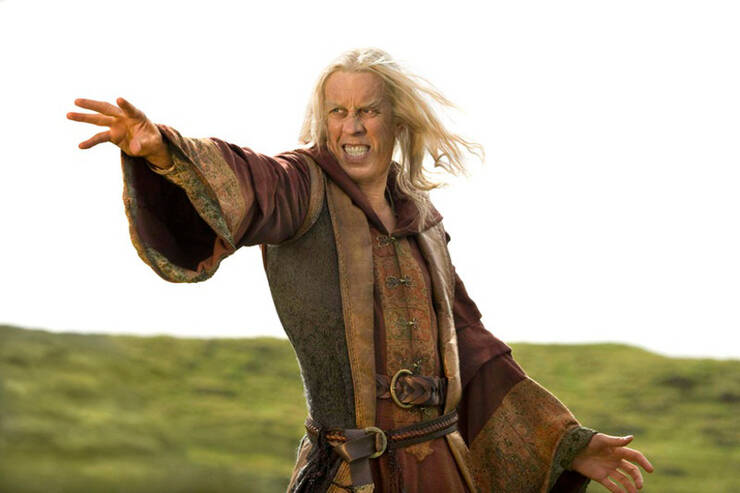
Printscreen: ABC; Zedacus Zul’ Zorander in Legend of the Seeker
We get more character development on Anna and Nathan’s side as well. Actually, the whole crew from the Palace of the Prophets is back in the Blood of the Fold. They don’t actually do much in the book but as I said before, this is a bridge book so their character development serves as a setup for future books.
Wizard’s third rule: Passion often rules reason
Since you have come this far, you know that Terry Goodkind always uses a main theme for his novels. After “People are stupid” (Wizard’s First Rule) and “Greatest harm comes from good intentions” (Stone of Tears), the main theme in Blood of the Fold is that “Passion rules reason“. This is an interesting theme and it has been presented in both, positive and negative contexts. As you can imagine, the villains are the ones presenting the theme in a negative connotation, mainly Tobias Brogan, whose religious zeal overcomes his reasoning so much that it drives him mad in the end. We can’t say that he has a character arc at all since he goes from bad to worse during the novel, representing what can happen when passion actually overcomes reason. The opposite example is Richard. He will learn to embrace his role as a conqueror in spite of his strong emotions against it since he knows it’s the only way in which he can save the world.
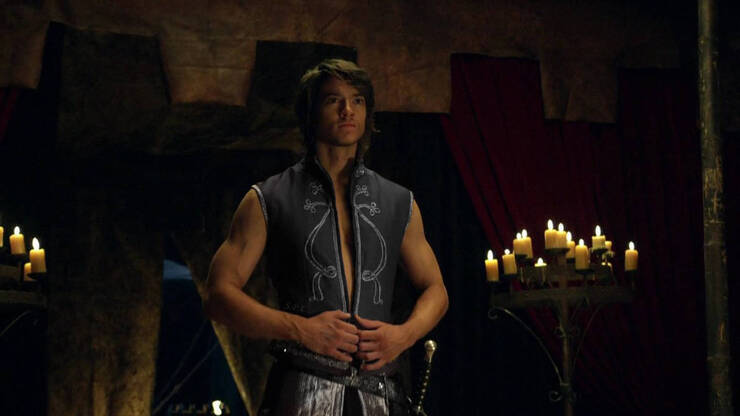
Printscreen: ABC; Richard Rahl in Legend of the Seeker
I noticed another theme in Blood of the Fold and that would be the moral dilemma when duty and friendship are conflicted. Many of Terry’s characters, both protagonists and antagonists, are put in situations in which they have to choose between their loved ones and the actions that they have to take which will put their friends in dangerous situations. When Kahlan learns what Richard has done with Midlands, her choice is basically to accept it or unleash her power on him. A similar theme occurs between Tobias and his sister Lunetta Brogan whom he uses as a pawn. Mord-sith on other hand know only of duty and Richard tries to show them that there is more to life than that, exploring this theme further.
Final thoughts on Blood of The Fold
Blood of the Fold is not the best book in the Sword of Truth series. I enjoyed it and I think it was a necessary one in order to understand the whole saga better. It could have been edited better and the pacing could have been done better. However, it did explore several interesting themes and gave us further character and world-building development. You can’t skip this book if you are planning to read the entire series as it wraps up some events and sets the stage for the ones to come. The importance of the events from this book will be fully understood once you finish reading Temple of the Winds.
